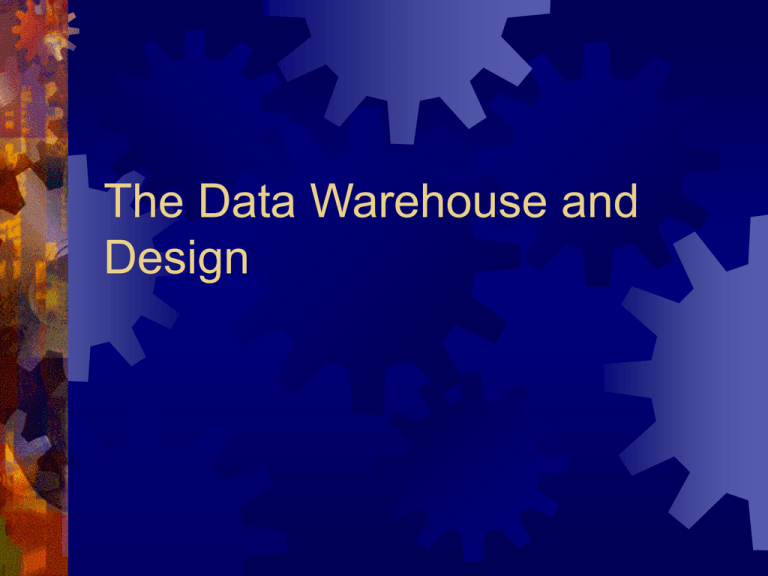The Data Warehouse and Design
advertisement

The Data Warehouse and Design Beginning with Operational Data Integration System World Wide Web Scientific Databases Personal Databases Data/Process Models and the Architected Environment There are two types of model for the information systems environment Data models Process models Function decomposition Context-level zero diagram Data flow diagram Structure chart State transition diagram HIPO chart Pseudocode The Data Warehouse and Data Models The data warehouse data model The midlevel data model The physical data model The Data Model and Iterative Development The reason why iterative development is important : The industry track record of success strongly suggest it The end user is unable to articulate requirements until the first iteration is done. Management will not make a full commitment until actual results are tangible and obvious Visible results must be seen quickly Normalization / Denormalization Normalization ? Why ? Denormalization? Why ? The different between normalization and denormalization Example Meta Data Meta data ? Typically items the meta data store tracks are as follows : Structure of data as known to the programmer Structure of data as known to the DSS analyst Source data feeding the data warehouse Transformation of data as it passes into the data warehouse Data model Relationship between the data model and the data warehouse History of extracts Cyclicity of Data-The Wrinkle of time Cyclicity Example of data ? Complexity of Transformation and Integration What make complexity in transformation and integration How to solve that problem. Triggering the Data Warehouse Record Events Components of the Snapshot Some Examples Profile Records Profile Records ? Example Managing Volume How to managing volume of data Why must managing volume of data Creating Multiple Profile Records How to create multiple profile records Example Going from the Data Warehouse to the Operational Environment What the different between the operational environment and the data warehouse environment Direct Access of Data Warehouse Data What is direct access of data warehouse data Example Indirect Access of Data Warehouse Data What is indirect access of data warehouse Example Indirect Use of Data Warehouse Data What is indirect use of data warehouse data Example Star Joins What is star joins ? Why using star joins ? How to use star joins ? Example Supporting the ODS What is ODS Different between level 1,2,3 and 4




